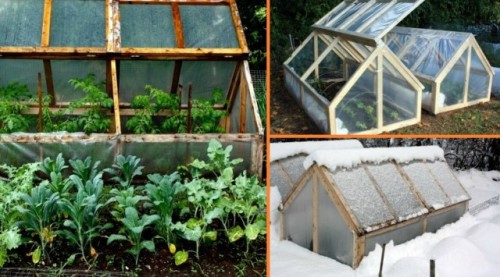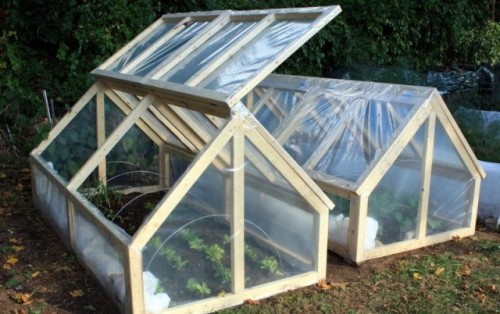~ The Pondering Muse🌙

~ the pondering muse🌙
Where have all the bugs gone? That’s what this post tries to answer and if you’re like me and hadn’t really noticed the lack of bugs recently, you’ll understand why this is such a big deal after reading the article. However, before we dive into this article, I want to share with you what I’ve noticed.
I’ve lived in Missouri for almost 19 years now, about a decade ago I remember windshields so full of bug splats that you couldn’t see out of it while driving down the highway and cringing at the *thump* of especially large bugs when they hit. I remember a season where when I rode my bike around town I couldn’t not hit a grasshopper because there were more than I could count all over the roads and fields. Last summer however? I remember pulling a single butterfly from the grill of my dad’s truck. That’s it… There were no more bugs. …
Here’s how plentiful our world used to be. We tend to think that the environmental conditions that we are born into are normal, but it is anything but normal.
“In “The Once and Future World,” the journalist J.B. MacKinnon cites records from recent centuries that hint at what has only just been lost: “In the North Atlantic, a school of cod stalls a tall ship in midocean; off Sydney, Australia, a ship’s captain sails from noon until sunset through pods of sperm whales as far as the eye can see. … Pacific pioneers complain to the authorities that splashing salmon threaten to swamp their canoes.” There were reports of lions in the south of France, walruses at the mouth of the Thames, flocks of birds that took three days to fly overhead, as many as 100 blue whales in the Southern Ocean for every one that’s there now. “These are not sights from some ancient age of fire and ice,” MacKinnon writes. “We are talking about things seen by human eyes, recalled in human memory.”“
So, when you read the above article, please understand how dire these circumstances are for us and our planet. Ok, so what are the highlights of the article?
“A 2013 paper in Nature, which modeled both natural and computer-generated food webs, suggested that a loss of even 30 percent of a species’ abundance can be so destabilizing that other species start going fully, numerically extinct — in fact, 80 percent of the time it was a secondarily affected creature that was the first to disappear.”
- Drastic drops in insect populations have been recorded globally.
- World’s largest king penguin colony shrank by 88%.
- Blue-fin Tuna populations have shrunk 97%.
- 60% decrease in total wild land animal populations.
- 96% of the planet’s biomass now is humans and livestock. Wild animals represent less than 4%. …
- 10-60% less arthropod biomass in Puerto Rico.
- 50-80% drops in partridges from France due to the lack of insects they eat.
- 50% of all farmland birds in Europe are gone.
- Birds which rely on insects may be starving to death due to their collapse.
These are some drastic decreases and we tend to forget that all species are connected. When we loose one species, we can loose all the species that rely on it. We need to recognize what is happening around us with our environment and our planet. We need to know, that what we are seeing today, isn’t normal.
More Posts from Copperfingertips and Others










I just came across Molly Costello’s art, and it’s so incredibly solarpunk! It’s so gorgeous and hopeful and wonderfully nature-inspired and I love everything about it.

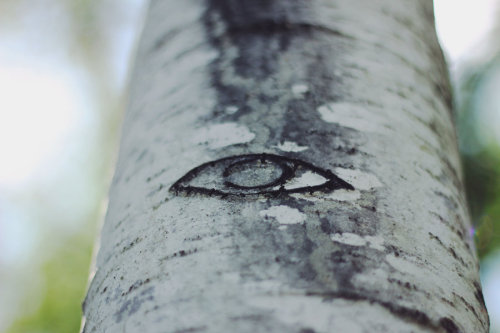
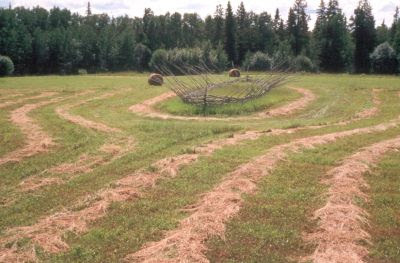
By copyrighting his property as an artwork, he has prevented oil companies from drilling on it.
Peter Von Tiesenhausen has developed artworks all over his property in northern Alberta. There’s a boat woven from sticks that is gradually being reclaimed by the land; there is a fence that he adds to each year of his life, and there are many “watching” trees, with eyes scored into their bark.
Oil interests pester him continually about drilling on his land. His repeated rebuffing of their advances lead them to move toward arbitration. They made it very clear that he only owned the top 6 inches of soil, and they had rights to anything underneath. He then, off the top of his head, threatened them that he would sue damages if they disturbed his 6 inches, for the entire property is an artwork. Any disturbance would compromise the work, and he would sue.
Immediately after that meeting, he called a lawyer (who is also an art collector) and asked if his intuitive threat would actually hold legally. The lawyer visited, saw the scope of the work on the property, and wrote a document protecting the artwork.
The oil companies have kept their distance ever since.
This is but one example of Peter’s ability to negotiate quickly on his feet, and to find solutions that defy expectations.
when the capitalists die out either thru global warming or revolution will we be able to start homegrown internet
Everyone should garden
Sometimes when I’m talking to people about sustainability they’re like, “well, not everyone wants to garden” and it’s like, on the one hand I’m sure that’s true because of the diversity of the human experience means that someone out there would hate gardening no matter what.
But on the other hand…. what???? Why would someone NOT want to experience the miracle of life and then have the freshest ingredients possible to cook with??? All while releasing no green house gasses and being super cheap???
Humans have literally lived forever surrounded by plants with cultivating plants as a vital part of how we have lived for thousands of years and you’re telling me that we should stop doing that because some people don’t like to garden??
Gardening isn’t a hobby! It’s a way of life that we all need to be living if we can because our current way of life is unsustainable! Also everyone that can garden should so we can support the people who can’t. Gardening is what made us human and we can’t stop now.

Tis the season of mass consumption. One of my friends was telling me about how her grandmother used to save old holiday cards to make name tags for presents. Seemed pretty solarpunk to me. Thought I’d share.
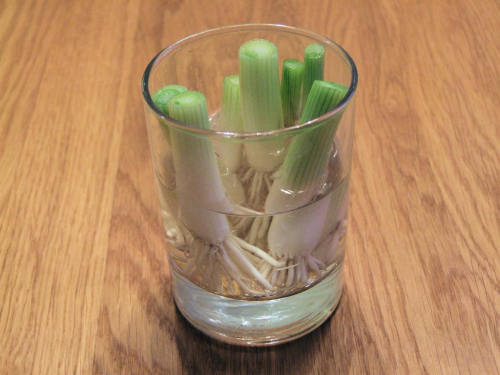
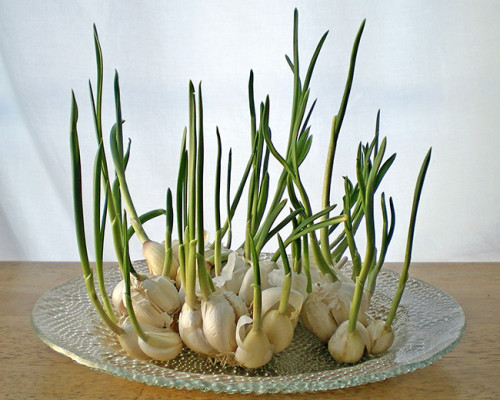
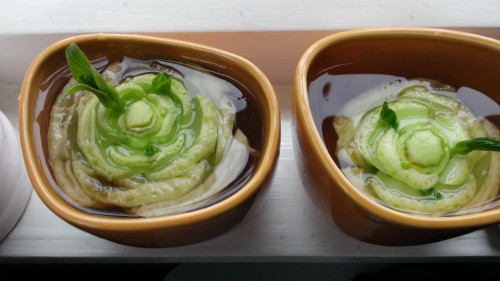
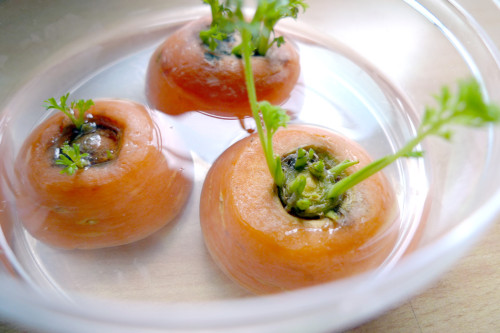
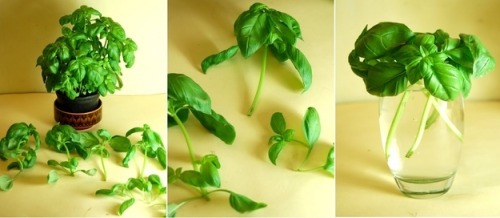

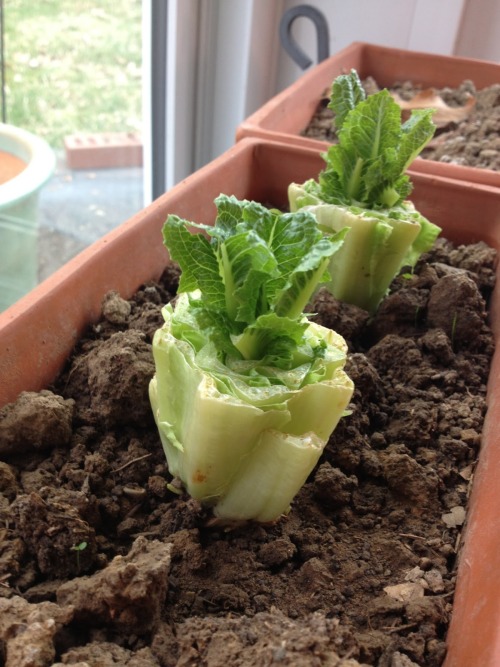
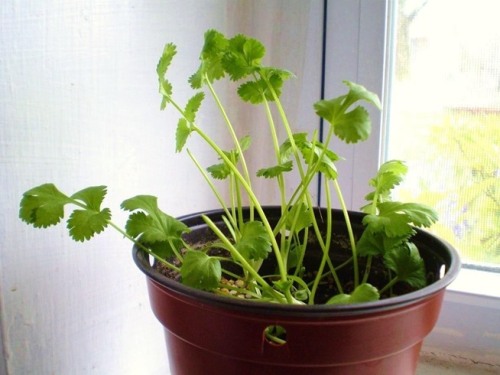
8 vegetables that you can regrow again and again.
Scallions
You can regrow scallions by leaving an inch attached to the roots and place them in a small glass with a little water in a well-lit room.
Garlic
When garlic begins to sprout, you can put them in a glass with a little water and grow garlic sprouts. The sprouts have a mild flavor than garlic and can be added to salads, pasta and other dishes.
Bok Choy
Bok choy can be regrown by placing the root end in water in a well-lit area. In 1-2 weeks , you can transplant it to a pot with soil and grow a full new head.
Carrots
Put carrot tops in a dish with a little water. Set the dish in a well-lit room or a window sill. You’ll have carrot tops to use in salads.
Basil
Put clippings from basil with 3 to 4-inch stems in a glass of water and place it in direct sunlight. When the roots are about 2 inches long, plant them in pots to and in time it will grow a full basil plant.
Celery
Cut off the base of the celery and place it in a saucer or shallow bowl of warm water in the sun. Leaves will begin to thicken and grow in the middle of the base, then transfer the celery to soil.
Romaine Lettuce
Put romaine lettuce stumps in a ½ inch of water. Re-water to keep water level at ½ inch. After a few days, roots and new leaves will appear and you can transplant it into soil.
Cilantro
The stems of cilantro will grown when placed in a glass of water. Once the roots are long enough, plant them in a pot in a well-lit room. You will have a full plant in a few months.

#TheFutureIsAccessible #TFiA
http://bonfire.com/thefutureisaccessible
[Image Description: indoors, Annie is sitting in a power chair front of an elevator wearing sunglasses, wrist/thumb braces, and a black t-shirt with text that reads, “The future is accessible”]

Kiki´s garden greenhouse
(just realised I never posted this on tumblr heh sorry)
this will be available as a square print later!
-
 sacredlilac liked this · 3 years ago
sacredlilac liked this · 3 years ago -
 artwriteanimationinspo reblogged this · 4 years ago
artwriteanimationinspo reblogged this · 4 years ago -
 earthgirlaesthetic liked this · 4 years ago
earthgirlaesthetic liked this · 4 years ago -
 onyxpriestess liked this · 4 years ago
onyxpriestess liked this · 4 years ago -
 pickledcarrotsandradish reblogged this · 5 years ago
pickledcarrotsandradish reblogged this · 5 years ago -
 solarpunkandtea liked this · 5 years ago
solarpunkandtea liked this · 5 years ago -
 quaetemere liked this · 5 years ago
quaetemere liked this · 5 years ago -
 pickledcarrotsandradish reblogged this · 5 years ago
pickledcarrotsandradish reblogged this · 5 years ago -
 pickledcarrotsandradish reblogged this · 5 years ago
pickledcarrotsandradish reblogged this · 5 years ago -
 zhengzi liked this · 5 years ago
zhengzi liked this · 5 years ago -
 theoreticalheroine liked this · 6 years ago
theoreticalheroine liked this · 6 years ago -
 bumblebeeappletree reblogged this · 6 years ago
bumblebeeappletree reblogged this · 6 years ago -
 spryt-i-heart liked this · 6 years ago
spryt-i-heart liked this · 6 years ago -
 neurorella reblogged this · 6 years ago
neurorella reblogged this · 6 years ago -
 neurorella liked this · 6 years ago
neurorella liked this · 6 years ago -
 starlightburden reblogged this · 6 years ago
starlightburden reblogged this · 6 years ago -
 starwarsrefs reblogged this · 6 years ago
starwarsrefs reblogged this · 6 years ago -
 copperfingertips reblogged this · 6 years ago
copperfingertips reblogged this · 6 years ago -
 starlightburden reblogged this · 6 years ago
starlightburden reblogged this · 6 years ago -
 zenisbest reblogged this · 6 years ago
zenisbest reblogged this · 6 years ago -
 capitalismisoverparty reblogged this · 6 years ago
capitalismisoverparty reblogged this · 6 years ago -
 bumblebeeappletree reblogged this · 6 years ago
bumblebeeappletree reblogged this · 6 years ago -
 theworldtravellingteenager liked this · 6 years ago
theworldtravellingteenager liked this · 6 years ago -
 brightwaterforarainyday liked this · 6 years ago
brightwaterforarainyday liked this · 6 years ago -
 all-disasters-have-an-upside reblogged this · 6 years ago
all-disasters-have-an-upside reblogged this · 6 years ago -
 twiggysawdust reblogged this · 6 years ago
twiggysawdust reblogged this · 6 years ago -
 flawed-howl liked this · 6 years ago
flawed-howl liked this · 6 years ago -
 thegaymerdragon liked this · 6 years ago
thegaymerdragon liked this · 6 years ago -
 thegaymerdragon reblogged this · 6 years ago
thegaymerdragon reblogged this · 6 years ago -
 twiggysawdust liked this · 6 years ago
twiggysawdust liked this · 6 years ago -
 feneron reblogged this · 6 years ago
feneron reblogged this · 6 years ago -
 feneron liked this · 6 years ago
feneron liked this · 6 years ago -
 fairy-onda reblogged this · 6 years ago
fairy-onda reblogged this · 6 years ago -
 zenosanalytic liked this · 6 years ago
zenosanalytic liked this · 6 years ago -
 purified-zone reblogged this · 6 years ago
purified-zone reblogged this · 6 years ago
